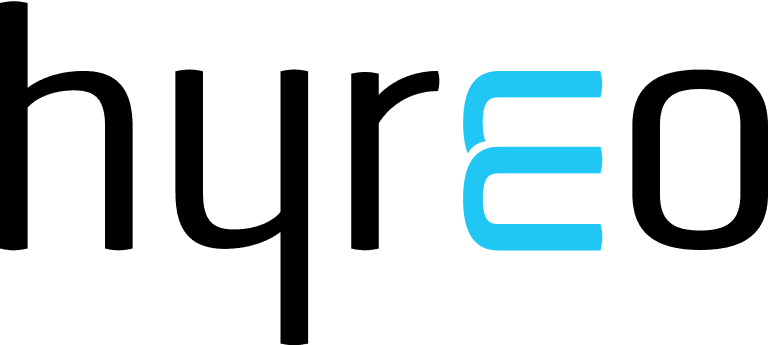Every organization is like a community – people with various skills, abilities, motivators, and aspirations – all coexisting and working towards a common goal.
Each individual has a role to play, which is clearly defined by the organization. If the skills and efforts of all the employees converge to meet the goal, the organization flourishes. If the efforts are divergent or scattered, it slows down the organization’s performance.
People, therefore, become the most significant resource for any company. Recruiting the right talent, skill and even people with the right attitude for the organization is an essential key to the harmonious functioning of the organization.
Often undervalued, recruiters face many challenges in the process. However, you can do a few things to improve your recruitment process.
Significance of A Robust Recruitment Process
Often recruiters are always expected to hire the best candidate for the job. To get this done, organizations must have a strong hiring process. But the question many organizations ask is why they should invest time, energy, intellect, and finances in this:
#1 Smooth operations
Hiring the right skills for the job makes the overall performance of the company consistent and predictable. Overall operations are also smooth if you hire the right people.
#2 Good organizational culture
Hiring people with the right attitude and aligning with organizational values will make it easy for leaders to maintain a healthy corporate culture.
#3 Increased brand credibility
Several organizations emphasize a great deal on hiring people that resonate with the company’s values. With their engagement with the organization and consistently high performance, the organization gains credibility and reputation in the market.
#4 Reduced costs
The cost of recruitment and onboarding is quite high when measured in terms of invested resources, man-hours, and productivity costs.The average cost per hire can be nearly $4700, as per SHRM’s benchmarking data.. If an organization has a streamlined, clear, and focused recruitment process, all these costs are managed quite effectively.
As John Wooden’s famous quote goes – “If you don’t have time to do it right, when will you have time to do it over?”
Adopting and leveraging technology platforms for recruiting, such as ATS, CRMs, and other video and onboarding platforms, provide a myriad of benefits, from automation of repetitive tasks to improving candidate experience, ultimately facilitating a significant reduction in recruitment costs.
Impact of A Weak Recruitment Process
Contrary to the above-mentioned points, a weak recruitment process costs the organization several times. It is estimated that nearly three-in-four employers are affected by a poor hire.
On average, companies tend to lose $14,900 on every bad hire, according to the Career Builder Survey. LinkedIn reports that bad hires can result in a 32% drop in employee morale and a 36% drop in productivity, according to research.
Only a recruiter can empathize with another’s predicament when hiring candidates. A grueling process with a ton of background work is put into the seemingly simple hiring activity.
5 Ways to Improve the Recruitment Process
An effective and efficient recruitment process has many advantages leading to an elevated candidate experience, with the primary beneficiaries being the recruitment team and the company.

The following stages will give you an insight into how a hiring loop is initiated and brought to closure:
#1 Promote your brand and clearly define an employee value proposition
The top companies of the world have an excellent brand image, and they continue to establish it through various media and marketing avenues.
Every product, service, and marketing mode represents the company’s vision and values. Companies with a strong brand image and a reliable employee proposition attract suitable candidates.
Challenges a recruiter may face:
When a company has not defined a clear vision statement and/or established what the brand must represent, the perception of the company is quite ambiguous. Similarly, not explaining what the employee stands to gain in the organization may not appeal to an aspiring candidate.
The tricky part is that these aspects are often defined by the senior management or owners of the organization, and executive staff may not be able to create all of this on their own.
Overcoming the challenge:
Recruitment can establish the company’s credibility in the first round of interviews while introducing the organization and/or the role. They can also mention benefits for the employee in their conversation. A good Job Description can also serve the purpose in this context.
Also read: 8 Solid Strategies for Creating an Employer Brand that Drives Results
#2 Define a clear Job Description for each role
A Job description is a document that explains all aspects of the role clearly. It is a credible document that helps the candidate understand their job responsibilities and how their skills will be used.
Challenges a recruiter may face:
The company may not have clear Job Descriptions for existing roles or may create ad-hoc roles, which may not be clearly defined. This not only creates ambiguity for the candidates but also makes it difficult for the recruiter to explain the role.
Overcoming the challenge:
Human Resources must create Job Descriptions for every role (basic explanation of the role) before sourcing for candidates. Although this may extend the hiring timeline, it is still a worthwhile activity to save a lot of time and effort in the future.
Recruiters often must be assertive enough to ask Operations for clear Job Descriptions and expectations. Although daunting, this is important so that a recruiter can get in the best candidates for the role.
#3 Sourcing and screening
Believe it or not, today, social media has become one of the top methods for sourcing talent. LinkedIn happens to be the most popular way to find employment opportunities.
Other sourcing avenues are campus recruitment, hiring camps, employee referral, and through external agencies. If you are a recruiter in an organization, involving third parties for sourcing can reduce considerable time and effort for you.
The next step to gathering the candidate pool is to screen them thoroughly. This becomes simple if the job role and expectations from the candidate are clearly defined.
Candidate profiling is the in-thing to screen candidates to gather and analyze data methodically. Many organizations have an HRMS tool to automate this process to save time and effort.
Challenges a recruiter may face:
Often, the cream of the candidates is hired very fast. Unless your employee value proposition is solid, you may not be able to fill in positions effortlessly. Not having enough data to understand the match between organizational needs and the available candidate pool may cause a mismatch in choosing the candidates. You may end up choosing a square peg to fit in a round hole.
Overcoming the challenge:
Certain colleges and consultants may have a better understanding of your needs and a richer source of candidates. Build mutually beneficial relationships with them.
Screening becomes significant in understanding which candidate has the potential to be trained. Oftentimes, companies pick candidates with the right attitude and invest in training them on required skills.
Also read: 5 Best Resume Screening Software for Recruiters
#4 Interviewing and selection
The process of interviewing has also evolved over time. Organizations employ various tools like psychometric tests, simulations, assessment centers, panel interviews, and gamification to evaluate candidates.
Age-old interviewing techniques like the STAR (Situation, Task, Action & Result) and CBI (Competency Based Interviews) are extensively used today.
STAR interviewing technique refers to a structured way of responding to an interview question with details and discussions around the situation, task, actions, and the expected result of the situation.
Challenges a recruiter may face:
Recruiters face a lot of pressure when it comes to closing a position. Too many positions to fill in a short period may cause all these innovations to be tossed out. The availability of Operational Heads for further interviews may delay the hiring process.
Overcoming the challenge:
Even though reiterated several times, know what you are looking for in a potential candidate for a said role. Basic methods such as the CBI can be really helpful to peg in the right candidate.
Even without an automated tool or system, recruiters can innovate by building an in-house worksheet. Candidate profiling is another effective way to identify potential candidates.
Analyzing hiring and attrition trends may help a recruiter understand employee expectations as well as operational needs.
#5 Onboarding the Employee
A lot of paperwork and personal interaction come into play after the candidate has been interviewed.
Offer and appointment letters, expectation-setting meetings, joining formalities, and induction take time to close the hiring loop.
It is recommended that there is an open and consistent communication channel between the recruiter and the candidate once he or she is offered a position. Employee induction starts as soon as a potential candidate is selected for a role.
Challenges a recruiter may face:
Salary negotiations, in the face of a set budget, can be tricky in closing a position. Offers from the competition (especially for sought-after roles) can be a game-changer. Many candidates drop off, even at the final stages of hiring.
Overcoming the challenge:
Although recruiters must work under many constraints, transparency and clarity in communicating the job role, expectations, and benefits help tremendously.
Also read: 7 Strategies to Keep New Hires Engaged Before Their First Day
In Conclusion
You will realize that a lot of spadework is involved even before you start hiring. Although slightly tedious, it is a one-time activity, which will create clarity for candidates.
With every interviewed candidate, the recruiter gains invaluable experience in understanding people and their potential.
Keep your goals and communication clear to hire the right potential for your company. A recruiter is like a bricklayer who eventually ends up building a strong foundation for the organization with every individual he brings in
FAQs on Improving the Recruitment Process
What is key to success in recruitment?
A phenomenal candidate experience is the key to success in recruitment, with an elevated candidate experience leading to higher conversions and higher performance and retention of employees once they join the organization.
One of the key elements of the candidate experience is post-offer candidate engagement, ensuring that candidates are closely engaged with the organization, with automated branding content updates and interaction with recruiters, leaders & hiring managers, enabling higher conversion rates.
Why is a good recruitment process important?
Organizations must have a strong hiring process not just to hire stellar talent but also to ensure:
Operational efficiency
Collaborative, diverse & inclusive organizational culture
Increased brand credibility
Reduced costs
What is the impact of a weak recruitment process?
A weak recruitment process costs the organization on several levels. It is estimated that nearly three-in-four employers are affected by a poor hire.
On average, companies tend to lose $14,900 on every bad hire. According to research, bad hires can result in a 32% drop in employee morale and a 36% drop in productivity.
What are the best practices to improve your recruitment process?
An elevated candidate experience is critical to improving candidate conversion rates and engagement with the company. Below are a few key ways to improve the recruitment process:
Promote your brand and clearly define an employee value proposition
Define a clear Job Description for each role
Build a robust recruitment funnel with diverse sources of talent such as social recruiting, campus hiring, hiring from minority & underrepresented groups etc.
Differentiated models of evaluation such as hackathons, tech assessments & pilot projects for candidates
Post offer candidate engagement to ensure higher candidate conversions
A phenomenal onboarding experience
What is a talent acquisition KPI?
Talent acquisition goals or KPIs are recruitment metrics that highlight the efficacy of the recruitment process, the hiring of the right talent, and business money saved while validating the ROI on recruitment investment.
Using SMART metrics or KPIs in your recruitment process help measure success and improvise continuously based on priorities.
Creating and executing a data-driven and dynamic recruitment strategy with the SMART goals and KPIs will help uncover risks before they become challenges, enabling strong business growth.


